Tar and Chip Driveway – Your 10-Step Installation Guide
Exploring the rustic charm of a tar and chip driveway offers a blend of durability and aesthetic appeal, making it an enticing option for homeowners seeking a unique look.
A tar and chip driveway is a construction method where hot tar is applied to the ground as a binder, and then stone chips are spread over it for a textured finish. This process creates a driveway with a more natural, gravel-like appearance while offering the durability and solidity of conventional pavement. It’s particularly valued for its ability to provide excellent traction, lower heat absorption in summer, and a customizable look through the choice of different stone colors and sizes.
Discover the installation steps and the benefits of tar and chip driveways, ensuring your pathway not only stands the test of time but also enhances your home’s curb appeal.
How To Install a Tar and Chip Driveway in 10 Steps
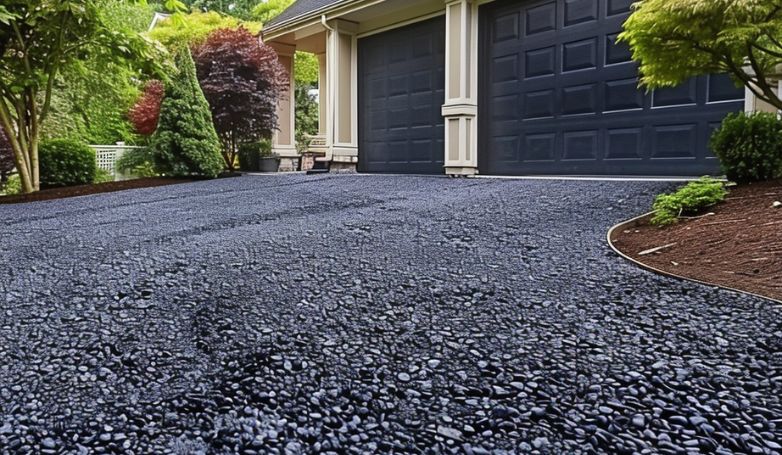
Installing a tar and chip driveway is a cost-effective way to achieve a durable and attractive surface. This ten-step guide will walk you through the process, from preparation to completion, ensuring you have all the knowledge needed to create a stunning driveway.
1. Clearing the area of any vegetation or debris
Begin by thoroughly clearing the designated driveway area of all vegetation, roots, and debris. This step is crucial to prevent organic material from decomposing underneath your paved path, which could lead to unevenness and instability in the future. Ensure the ground is completely bare and smooth, ready for the next stage of preparation.
2. Grading the site to ensure proper water drainage
Proper grading is essential to direct water away from your driveway and foundation. Slope the ground slightly (about a 1% to 2% incline away from any structures) to ensure efficient water drainage. This step prevents water accumulation that can weaken your driveway’s structure over time and lead to erosion or damage.
3. Applying a layer of gravel or aggregate for stability
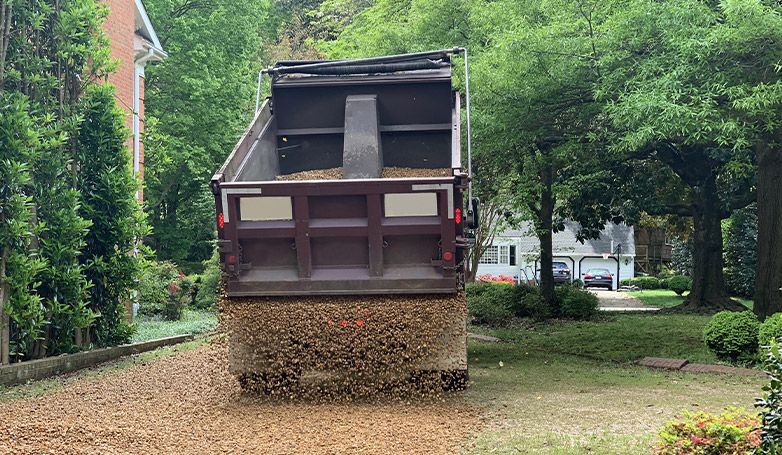
Lay down a thick layer of crushed stone or gravel as the base of your tar and chip driveway. This layer should be at least 4-6 inches deep, providing a stable foundation that will support the weight of vehicles. The gravel also facilitates proper drainage beneath the driveway surface, further enhancing its durability.
4. Compacting the base material thoroughly
Using a mechanical compactor, press down on the gravel layer to create a solid, compacted base. This step is vital to eliminate any air gaps and ensure a level foundation that won’t shift over time. A well-compacted base prevents future sagging or cracking of the driveway surface.
5. Edging the driveway to define its boundaries
Install edging along the sides of your driveway to define its boundaries and contain the paving materials. Edging can be made from various materials such as metal, wood, or stone, and serves to enhance the driveway’s appearance while also providing structural support and preventing the spread of aggregate.
6. Applying a tack coat to enhance adhesion
Before laying the tar, apply a tack coat—a thin, sticky layer of liquid asphalt—to the compacted base. This adhesive layer ensures that the hot tar will properly bond to the base, improving the overall durability and longevity of your driveway. Ensure even coverage for optimal adhesion.
7. Pouring and spreading the hot liquid tar evenly
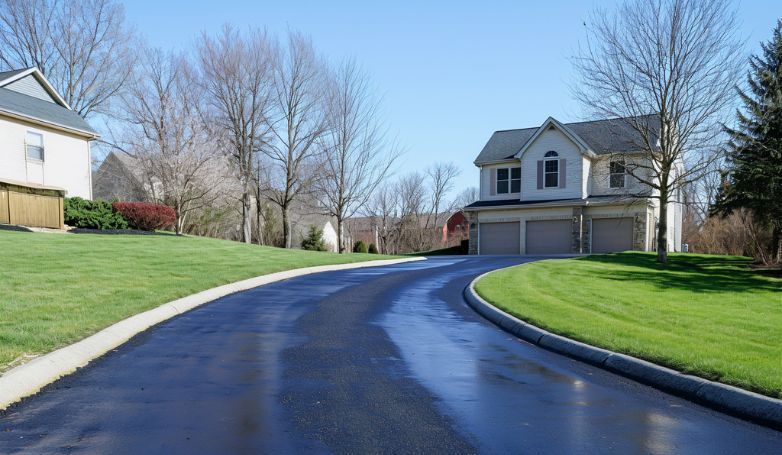
Heat the liquid tar to the manufacturer’s recommended temperature and pour it over the prepared base. Use a spreader to distribute the tar evenly across the entire surface, ensuring that every area is adequately covered. This layer acts as the binding agent for the aggregate, creating a cohesive surface.
8. Adding a layer of aggregate or chippings over the tar
Immediately after spreading the tar, while it’s still hot, apply a generous layer of stone chips or aggregate. Choose a color and type of stone that matches your home’s exterior for aesthetic appeal. The aggregate should be spread evenly, completely covering the tar to ensure a uniform texture and appearance.
9. Rolling the surface to compact the aggregate
Once the aggregate is in place, use a roller to press the stones into the tar. This compaction process embeds the stones firmly within the tar, creating a solid, cohesive surface. The rolling also ensures that the tar and chip driveway will be level and smooth, with the aggregate securely fixed in place.
10. Curing the driveway for the recommended time
Allow the newly laid driveway to cure and harden. The curing process can take several days, depending on weather conditions and the specific materials used. Avoid driving or walking on the surface during this time to ensure the surface has fully set, resulting in a strong and long-lasting driveway.
Following these steps carefully will result in a beautifully finished tar and chip driveway that combines rustic charm with practical durability, providing an inviting entrance to your home for years to come.
Tar and Chip Driveway Pros
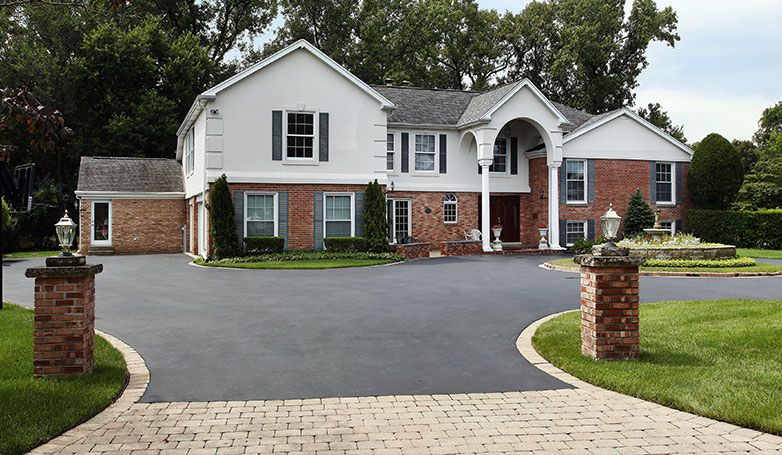
Let’s explore the advantages that make tar and chip driveways a popular choice for many homeowners.
Cost-effective Compared to Alternatives
These types of driveways are significantly more affordable than many other driveway materials, such as concrete or asphalt. This cost-effectiveness stems from the use of inexpensive materials and a simpler installation process that doesn’t require specialized machinery. The economic savings don’t compromise quality, making tar and chip an excellent choice for those looking to maximize their investment in home improvements.
Long-lasting and Durable
An additional advantage is its durability. When properly installed, it can withstand harsh weather conditions, heavy traffic, and the test of time, lasting up to a decade or more before needing a refresh. This resilience is due to the robust combination of tar and stone, which together create a tough, flexible surface that resists cracking and damage.
Aesthetic Appeal with Customizable Options
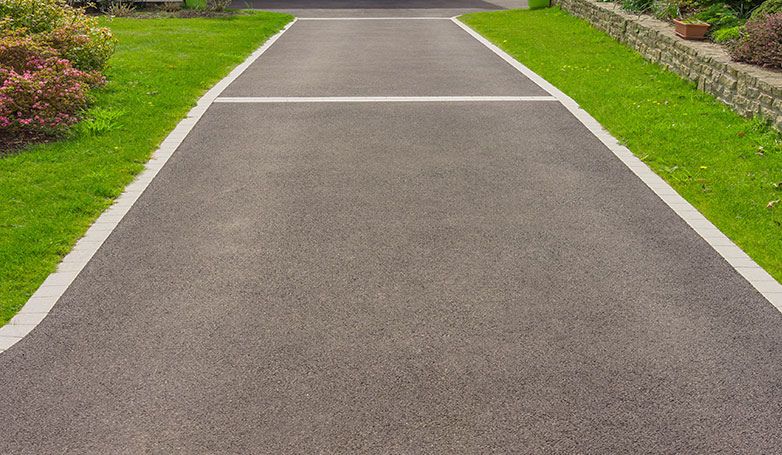
Tar and chip driveways bring a unique, rustic charm that you just don’t get with asphalt and concrete. With a variety of aggregates to choose from, you can customize both the texture and color, letting you design a driveway that perfectly matches your home and garden. Whether you’re going for something understated and natural or want to make a striking visual statement, you can tweak a tar and chip driveway to get the exact look you’re after.
Low Maintenance Requirements
Maintaining a tar and chip driveway is relatively straightforward and requires less effort than other types of driveways. There’s no need for regular sealing, and the rough texture helps hide stains and marks. Occasional topping up of the chips may be needed, but overall, the low maintenance aspect of these driveways makes them a practical choice for busy homeowners or those seeking a hassle-free driveway solution.
Tar and Chip Driveway Cons
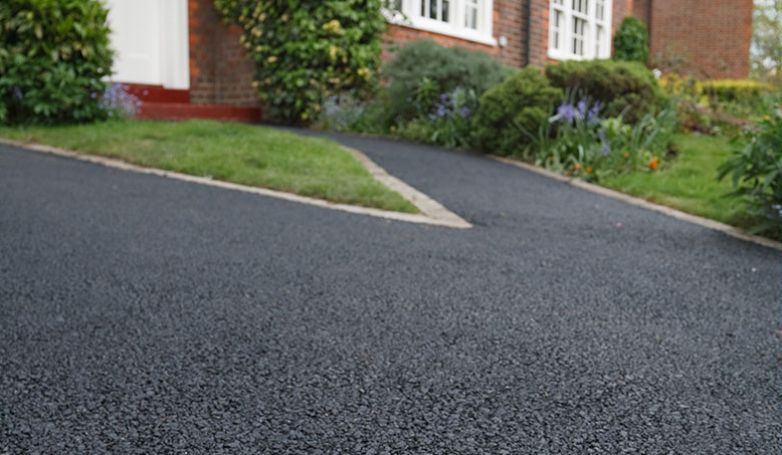
While tar and chip driveways offer unique benefits, it’s important to consider a few drawbacks before making your decision.
Rough Surface
The textured finish of tar and chip driveways, while offering excellent traction, can be rougher underfoot than other materials. This makes it less ideal for activities like basketball or skateboarding, where a smoother surface is preferred. The rough texture can also be harsher on pets’ paws, making it a consideration for households with outdoor animals.
Limited Aesthetic Options
While tar and chip driveways offer a rustic charm, they don’t provide the wide range of colors and patterns available with options like concrete or asphalt. The aesthetic is more natural and less customizable, which might not suit every homeowner’s vision for their property’s exterior. This limitation could influence the overall landscape design and curb appeal.
Maintenance Challenges
Over time, the chip surface can become loose, leading to the need for periodic maintenance. This might include adding additional layers of chips or occasional patching where the surface has worn away, especially in areas of high traffic. Unlike asphalt or concrete, which can be resealed as a whole, maintaining a tar and chip driveway can require more targeted repairs, potentially adding to long-term upkeep costs.
Tar and Chip Driveways Maintenance Tips
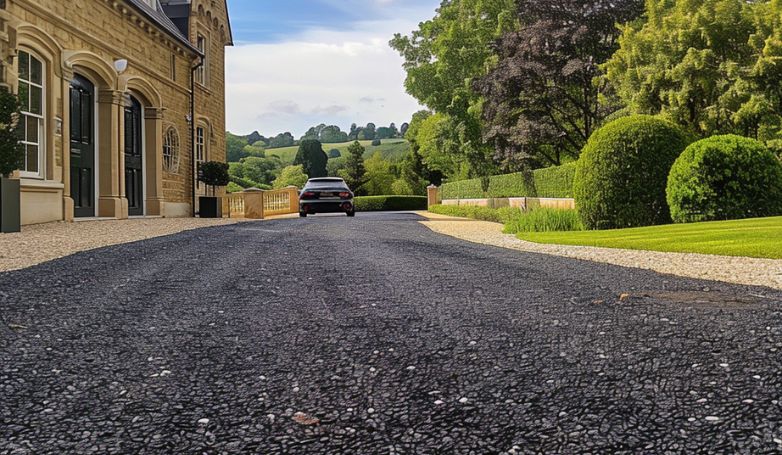
Maintaining a tar and chip driveway is crucial for preserving its appearance and extending its lifespan. Here are some effective tips to keep your driveway in top condition.
Regular Cleaning to Prevent Debris Accumulation
Regular sweeping and occasional rinsing with a hose can prevent debris and dirt from accumulating, which can retain moisture and potentially damage the surface over time. Cleaning also maintains the driveway’s aesthetic appeal, ensuring it looks its best year-round.
Sealcoating to Enhance Longevity
Applying a seal coat to your driveway every few years can significantly enhance its longevity. Sealcoating provides an additional protective layer against water infiltration, UV rays, and chemical spills, all of which can degrade the tar binder over time. This preventive measure keeps your driveway looking fresh and can extend its lifespan by several years.
Filling Cracks and Addressing Damage Promptly
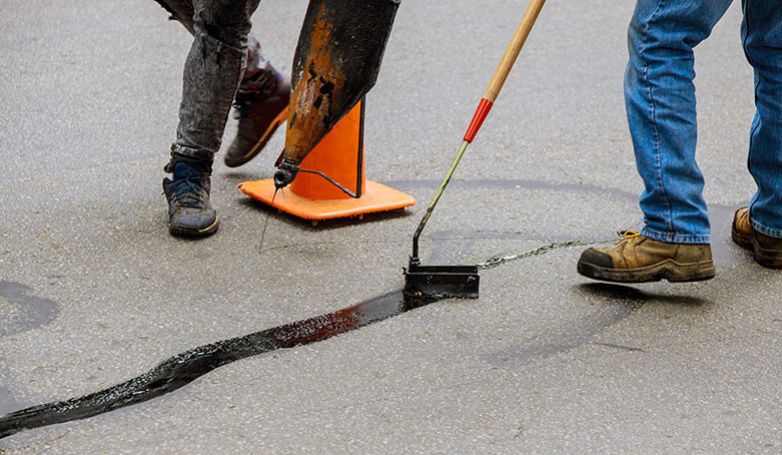
Although tar and chip driveways are durable, they may develop cracks or damage due to extreme weather or wear. Addressing these issues promptly by filling cracks and repairing damaged areas can prevent them from worsening. Early intervention keeps repairs minimal and helps maintain the structural integrity of your driveway.
Professional Inspections and Repairs
While many aspects of tar and chip driveway maintenance can be handled by homeowners, it’s wise to have professional inspections and repairs done periodically. Professionals can spot potential issues that may not be obvious to the untrained eye and can perform repairs using the right materials and techniques. Investing in professional upkeep ensures your driveway remains in optimal condition, safeguarding your investment.
Common Issues and Solutions
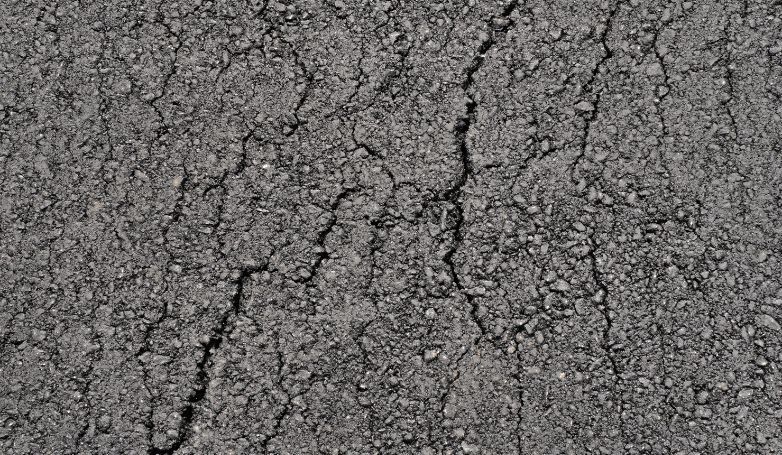
Tar and chip driveways, while durable and aesthetically pleasing, can encounter common issues over time. Understanding these problems and their solutions can help maintain the driveway’s integrity and appearance.
Cracking and Potholes
Cracking and the development of potholes are often due to water infiltration and subsequent freeze-thaw cycles. Address these issues by promptly filling in cracks and potholes with a suitable patching compound. Regular maintenance and ensuring proper drainage can prevent these problems from arising in the first place.
UV Damage and Fading
Continuous exposure to sunlight can cause the driveway’s surface to fade and the tar to deteriorate, leading to a loss of the aggregate. Applying a UV-protectant sealant can minimize this damage, preserving the color and condition of the driveway. Reapplying the sealant every few years can help maintain its effectiveness.
Drainage Issues and Water Pooling
Improper drainage can lead to water pooling on the surface of the driveway, which can weaken the tar and lead to aggregate loss. Ensure the driveway is graded correctly during installation to facilitate proper water runoff. For existing driveways, consider installing drainage solutions like French drains or adjusting the driveway’s slope.
Addressing Vegetation Growth
Weeds and grass can grow through cracks in the driveway, causing further damage and detracting from its appearance. Regularly inspect the driveway for signs of vegetation and use an appropriate weed killer to address any growth. Sealing cracks and maintaining the driveway’s surface can also prevent seeds from taking root.
Tar and Chip Driveways Ideas and Examples
Tar and chip driveways offer a versatile and customizable option for homeowners looking to enhance their property’s curb appeal. Here are some inspiring ideas and examples:
Classic Black Tar Driveway
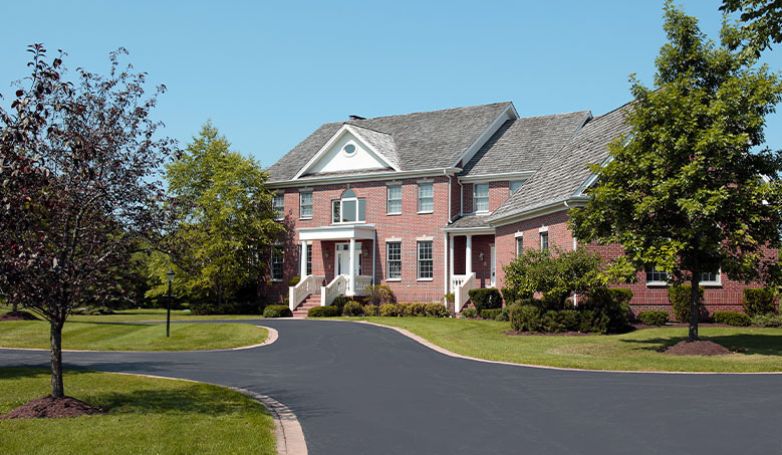
A classic black tar driveway exudes elegance and simplicity, providing a smooth, uniform look that complements any home exterior. Its timeless appeal and durability make it a popular choice, offering a sleek and sophisticated entrance to your property.
Decorative Chip Seal Driveway
Incorporating various colors and types of chips, a decorative chip seal driveway can be customized to match your home’s aesthetic. This option allows for creative patterns and designs, adding unique texture and character to your driveway and overall landscape.
Stamped Asphalt Driveway Patterns
Though not a traditional tar and chip (driveway) method, incorporating stamped patterns into the asphalt layer before the chip seal process can mimic the look of brick, stone, or other textures. This technique adds a decorative touch, enhancing the visual appeal of your driveway.
Colored Tar Driveway Surfaces
By adding pigments to the tar, colored tar driveways can be created to complement or contrast with your home’s color scheme. From subtle earth tones to more vibrant shades, colored tar offers an opportunity to personalize your driveway’s appearance.
Exposed Aggregate Tar Driveway
An exposed aggregate tar driveway features a surface where the stone chips are prominently displayed, creating a rugged, textured look. This method not only adds visual interest but also provides excellent traction, making it a practical choice for all weather conditions.
Tar and Chip Driveway Cost
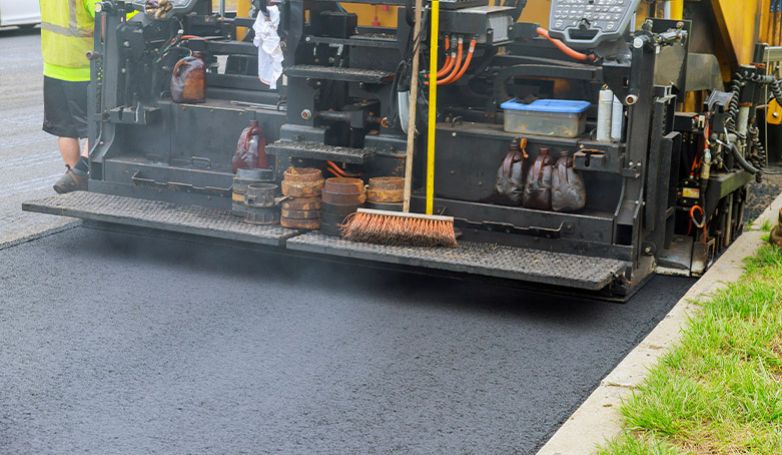
The cost of a tar and chip driveway is often regarded as one of its most appealing features, particularly when compared to other driveway materials. On average, homeowners might expect to pay between $2 and $5 per square foot, making it a notably economical choice. This cost-efficiency doesn’t compromise the driveway’s durability or aesthetic value.
Factors influencing the final price include the driveway’s size, the type of stone chips selected, and regional labor costs. Despite these variables, the tar and chip method remains an attractive option for those seeking a balance between affordability and functionality, offering a rustic charm that asphalt or concrete driveways can’t match.
Tar and Chip Driveway Alternative
Exploring alternatives to tar and chip driveways can offer different benefits and aesthetics suited to varying preferences and requirements. Here are some popular alternatives:
Concrete Driveway
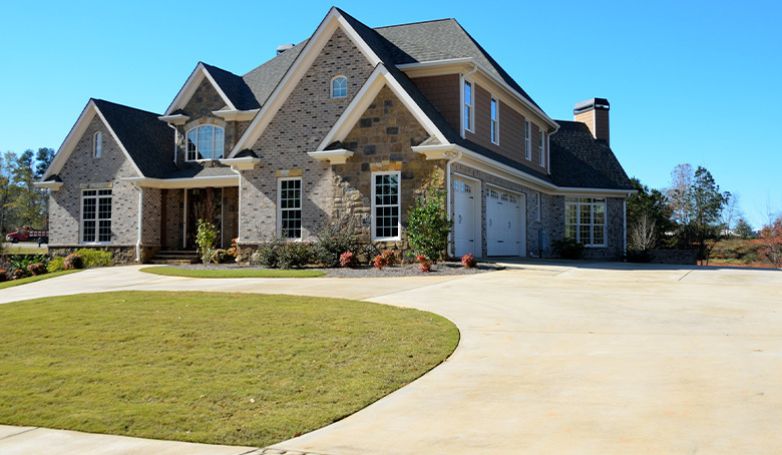
Concrete driveways provide a clean, modern look with their smooth, uniform surface. They offer durability and long lifespan, resisting weather-related damage and heavy loads. While initially more expensive than tar and chip, their minimal maintenance and longevity can make them a cost-effective option over time.
Asphalt Driveway
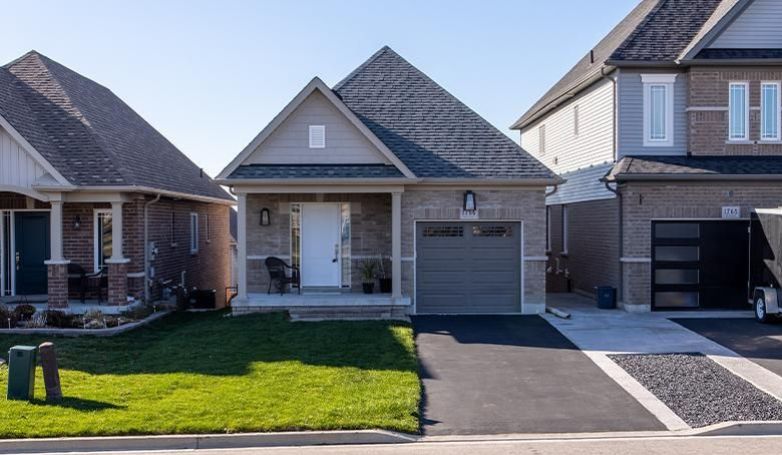
Asphalt driveways are prized for their resilience and flexibility, with an ability to withstand freezing and thawing without cracking as easily as concrete. They require sealing every few years to maintain their dark, rich color and prevent water penetration but are generally more affordable to install than concrete.
Gravel Driveway

Gravel driveways are one of the most affordable and easiest to install. They provide natural drainage and can be replenished or adjusted as needed. While they may require more frequent maintenance to keep tidy and functional, their rustic appeal can complement country or cottage-style homes beautifully.
Paver Driveway
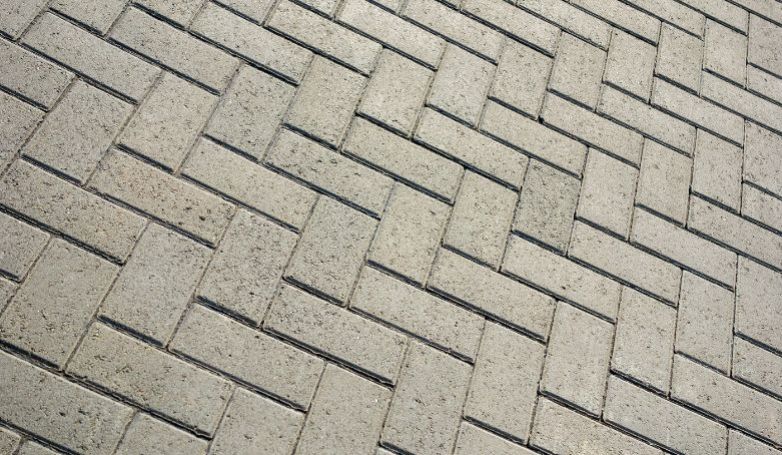
Paver driveways, made from brick, stone, or concrete pavers, offer unparalleled aesthetic diversity and charm. They can be laid in various patterns and colors to create unique designs. Although the upfront cost can be higher, their ease of repair and potential for personalization make them a desirable choice for many homeowners.
Permeable Driveway
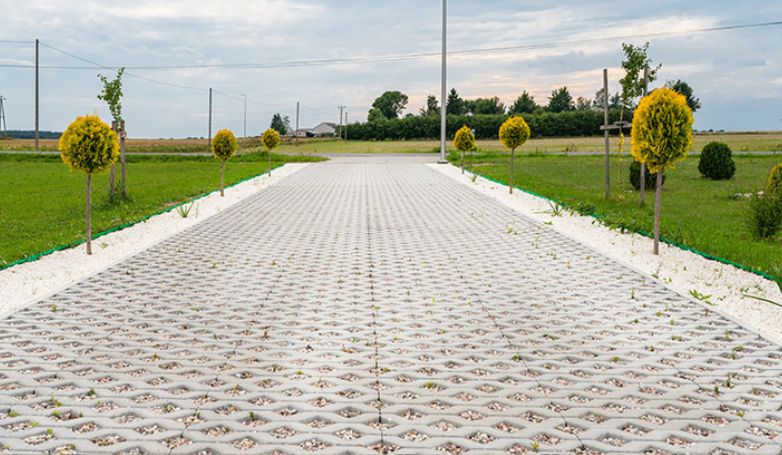
Permeable driveways, constructed from materials that allow water to pass through to the ground beneath, offer an eco-friendly solution to stormwater management. They can be made from porous concrete, permeable pavers, or plastic grids filled with gravel or grass. This alternative is ideal for reducing runoff and promoting groundwater recharge, combining functionality with environmental responsibility.
FAQs about a Tar and Chip Driveway
Take a look at these frequently asked questions about tar and chip driveways.
Can you tar and chip your own driveway?
DIY enthusiasts can tar and chip their own driveway with the right equipment and materials. However, it requires a bit of skill to ensure proper application and even coverage. For best results, some might prefer hiring professionals.
Can you seal a tar and chip driveway?
Yes, you can seal a tar and chip driveway, though it’s not commonly done. Sealing can enhance its durability and extend its lifespan. If choosing to seal, select a product compatible with tar and chip surfaces.
How long will a tar and chip driveway last?
A tar and chip driveway generally has a lifespan of 7 to 10 years. Its longevity can be extended with proper maintenance, including regular cleaning and addressing any damage promptly.
How thick should a tar-and-chip driveway be?
The recommended thickness for a tar-and-chip driveway is about 2 inches. This thickness ensures durability and the ability to withstand regular vehicular traffic without significant wear.
Is tar and chip cheaper than concrete?
Yes, tar and chip is generally cheaper than concrete. The materials and installation process for a tar-and-chip driveway are less costly, making it a budget-friendly alternative to concrete driveways.
Is tar and chip cheaper than asphalt?
Tar and chip driveways are usually comparable in cost to asphalt but can be slightly cheaper depending on local material and labor costs. They offer a similar level of durability and maintenance requirements, making them a cost-effective alternative.
Conclusion
Tar and chip driveways offer homeowners an excellent blend of affordability, durability, and aesthetic appeal, making them an attractive option for those seeking to upgrade their outdoor space. This method, combining the robustness of tar with the natural beauty of chip stones, provides a customizable solution that fits various home styles. With proper maintenance and installation, a tar and chip driveway not only enhances the property’s appearance but also offers a long-lasting surface. As we explore the cost, alternatives, and maintenance tips, it becomes clear that tar and chip driveways stand out as a versatile and practical choice for any homeowner.

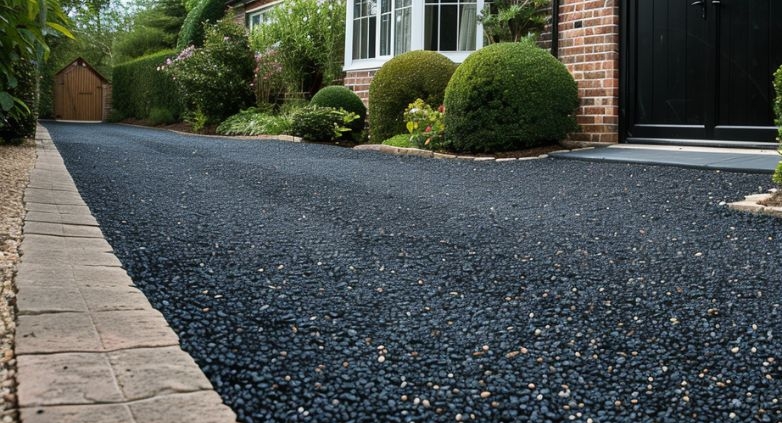

Leave a Reply
Want to join the discussion?Feel free to contribute!